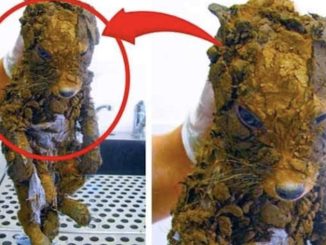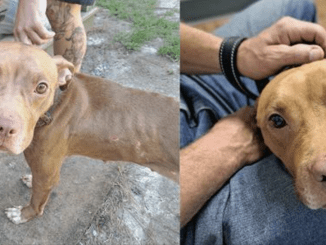A Texas man found himself in a coma and facing a 4% chance of survival after attempting to remove an ingrown hair from his leg.
Despite being a grooming technique many people will have faced before, for Steven Spinale, attempting to remove an ingrown hair resulted in a series of life-threatening complications.
His sister, Michelle, has been documenting his near-death experience on TikTok.
According to Michelle, Steven was diagnosed with sepsis as a result of the infection in late 2022.
Sepsis, a severe infection that triggers a chain reaction throughout the body, posed a grave threat to Steven’s life, leading to his hospitalization in late 2022.

Credit: GoFundMe
A GoFundMe has been set up to help aid Steven and his loved ones. It currently stands at over $9,000.
Steven’s condition rapidly deteriorated as he also contracted influenza A, double pneumonia in both lungs, and acute respiratory distress syndrome during his hospital stay.
The root cause of his ordeal stemmed from an infection contracted while attempting to extract the ingrown hair from his groin area. The infection progressed to a septic bacterial infection, severely damaging his heart and organs.
But what are the guidelines when it comes to an ingrown hair?

Credit: Ali Majdfar / Getty
Well, according to the Mayo Clinic, if you suspect that you may have an ingrown hair, visit your healthcare provider. They will typically diagnose ingrown hair by examining your skin and inquiring about your hair removal practices.
Treatment: If you suspect or have been diagnosed with an ingrown hair, it’s crucial to halt shaving, tweezing, or waxing until the condition improves – this is usually within 1 to 6 months.
During this time, consider trimming a beard with scissors or electric clippers instead. Refrain from resuming shaving until all affected skin has cleared and ingrown hairs have disappeared.
Looking after your skin at home is the first stage of managing and helping to prevent ingrown hairs. The Mayo Clinic suggests the following:
If you’re dealing with razor bumps but unable to cease shaving, establishing a consistent skincare routine can help manage this condition effectively. Consider the following steps:
- Frequency of Shaving: Aim to shave at least twice a week to prevent razor bumps from worsening.
- Avoid Tweezing: Refrain from tweezing ingrown hairs, as this can exacerbate the condition.
- Pre-Shave Preparation: Before shaving, cleanse the affected area using a warm washcloth or soft-bristled toothbrush. Use a circular motion for a few minutes to help soften the hair and open up pores. Follow this with the application of a warm, damp cloth for additional softening.
- Shaving Technique: Apply shaving cream generously to the area, ensuring it remains moist throughout the process. Utilize a sharp, single-blade razor and refrain from pulling the skin while shaving. Shave in the direction of hair growth to minimize irritation.
- Blade Maintenance: Rinse the razor blade after each stroke to prevent clogging and ensure a smoother shave.
- Addressing Ingrown Hairs: If ingrown hairs are visible, release them by carefully inserting a sterile needle under each hair loop and gently lifting the tip that has grown back into the skin.
- Post-Shave Care: After shaving, rinse your skin thoroughly and apply a cool, wet cloth for a few minutes to soothe any irritation. Follow this with the application of a soothing after-shave product. If necessary, consider using a 1% hydrocortisone cream for up to four weeks to alleviate inflammation.
- Alternative Shaving Methods: If close shaves exacerbate your condition, opt for electric clippers instead. Set them to leave some stubble, which can reduce the likelihood of razor bumps. Additionally, if traditional shaving methods prove ineffective, consider using a chemical hair removal product (depilatory), such as Nair or Magic. However, perform a patch test on a small area of skin first to ensure compatibility.
However, while these measures aid in managing the condition, they may not provide a permanent solution. This is where medical intervention may be required. Additionally, if abstaining from hair removal for an extended period is not feasible or if self-care methods prove ineffective, your healthcare provider may suggest:
Medications: Your healthcare provider may prescribe specific medications to help alleviate your condition, including:
- Exfoliating agents: Nightly application of a retinoid cream, like tretinoin (Renova, Retin-A, others), aids in clearing dead skin cells and may show results within two months. Additionally, a retinoid cream may help address discoloration (postinflammatory hyperpigmentation). Glycolic acid lotion can also reduce hair curvature, reducing the likelihood of hair ingrowth.
- Skin-calming creams: Steroid creams are effective in reducing irritation and itching associated with ingrown hair.
- Anti-infective creams or pills: Antibiotic creams are useful for treating mild infections resulting from scratching, while severe infections may require oral antibiotic medication.
- Hair growth inhibitors: Prescription cream such as eflornithine (Vaniqa) decreases hair regrowth when used alongside laser therapy or other hair removal methods.
Laser Hair Removal and Electrolysis: Your healthcare provider may recommend laser-assisted hair removal, which targets hair at a deeper level compared to traditional hair removal methods. This treatment slows regrowth and provides a longer-term solution.
Your healthcare provider may also provide a combination of both medication and laser hair removal.
Steven’s case is incredibly rare – but a story we should all be wary of.
Doctors had to navigate a complex medical scenario, discovering internal bleeding and a rare bacteria ravaging his body. Despite the urgency, Steven’s condition prevented immediate surgical intervention.
Placed in a medically induced coma, Steven was declared brain dead by medical professionals, with only a four percent chance of survival. He underwent numerous procedures, including open-heart surgery and extensive respiratory support.
Against the odds, Steven emerged from his coma months later in late 2023, astonishing his medical team with his recovery. Despite initial skepticism, he showed no signs of brain damage and steadily regained his faculties.
“We never lost hope or faith. And thank God we didn’t because look at him now!” ,” Michelle captioned a video shared last week, adding: “[Doctors] aren’t the final word.”
Watch the TikTok below:
@michellebell111 Replying to @Travel girl #brotherskeeper #wakingupfromacoma #coma #spinalestrong #drsmakemistakes ♬ Never Give Up – Motiversity & Coach Pain & Dr. Jessica Houston
Her followers flooded the comments with messages of encouragement and admiration for Steven’s resilience.
Source: newsc87.com


